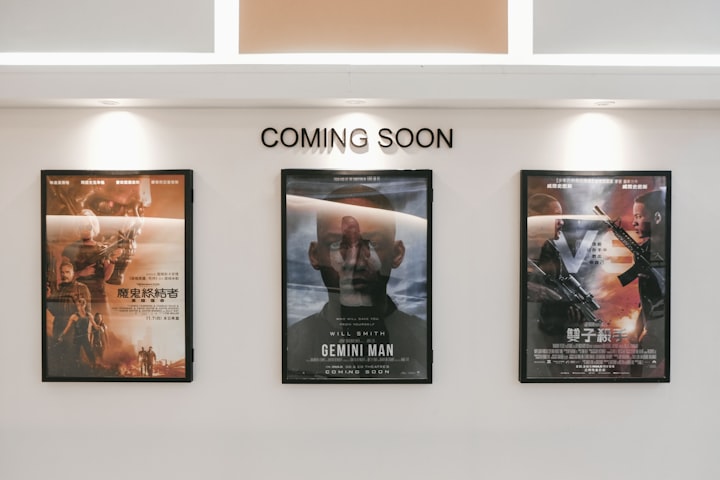Lights, Camera, Evolution: A Journey Through the History of Moviegoing
From Simple Storefronts to Immersive Theaters, How Moviegoing Has Transformed Over the Years

Movies have been a form of entertainment for over a century, but the way we experience them has changed dramatically since the first motion pictures were shown in the late 1800s. The evolution of moviegoing has impacted not only the movie industry, but also the way we view culture, entertainment, and technology. In this article, we'll explore the history of moviegoing, its impact on society, and the future of moviegoing.
The Early Days of Moviegoing
The earliest movie theaters were simple and small, often set up in empty storefronts or on the streets. These venues were makeshift and lacked the luxury amenities we take for granted today, such as comfortable seating, air conditioning, and high-quality sound. Films were only a few minutes long, and the technology used to create them was basic.
As movie technology advanced, so did the theaters themselves. By the 1910s, purpose-built movie theaters had become commonplace, complete with modern amenities like plush seating and air conditioning. These theaters were designed to be destinations in themselves, with ornate architecture and grand interiors that added to the overall experience.
The Golden Age of Moviegoing
The 1930s and 1940s are often referred to as the "Golden Age of Hollywood," and this era was also the height of moviegoing. Going to the movies was a popular form of entertainment for people of all ages, and theaters were packed with moviegoers on a regular basis.
During this era, theaters became even more elaborate and luxurious. Many featured grand lobbies, elegant chandeliers, and state-of-the-art sound systems. The movies themselves were also more lavish, with big-budget productions and major stars.
The Decline of Moviegoing
In the 1950s, the rise of television began to impact the movie industry. People could now watch movies and other programs from the comfort of their own homes, which made going to the theater less of a necessity. The popularity of drive-in theaters also declined during this era as television became the preferred form of entertainment for many Americans.
In response to moviegoing's decline, theaters began experimenting with new technologies and formats to attract audiences. 3D movies, widescreen formats, and other gimmicks were introduced to try to lure people back to the theaters.
The Rise of Multiplex Theaters
In the 1970s, multiplex theaters began to emerge. These theaters featured multiple screens and could show several movies simultaneously. This format proved popular with audiences, as it allowed for greater choice and flexibility in movie selection.
As multiplex theaters became more common, they also became more luxurious. Theaters began to offer amenities like reclining seats, stadium seating, and even in-seat food and beverage service. This trend continued into the 21st century, with some theaters now offering full restaurant menus and alcoholic beverages.
The Impact of Digital Technology
In the 21st century, digital technology has revolutionized the movie industry and the way we experience movies. Digital projectors and sound systems have replaced traditional film projectors, allowing higher-quality audio and video.
The rise of streaming services like Netflix and Hulu has also impacted moviegoing. People can now watch movies and TV shows from the comfort of their own homes, and they have access to a vast library of content. This has made going to the theater less of a necessity, but there is still a demand for the theater experience.
The Future of Moviegoing
The future of moviegoing is uncertain, but there are some trends that suggest where the industry is headed. One trend is the continued rise of luxury theaters. These theaters offer amenities like gourmet food, reclining seats, and alcohol service, and they are likely to continue to attract moviegoers who want a more upscale experience.
Another trend is the use of virtual reality and immersive technology to enhance the moviegoing experience. This technology allows viewers to feel like they are inside the movie, with images and sounds that surround them. This could revolutionize the way we experience movies and may attract a new generation of moviegoers.
There is also the potential for the integration of social media and interactive elements into the moviegoing experience. Some theaters are experimenting with allowing viewers to interact with the movie and each other in real-time through their smartphones or other devices. This could create a more communal and engaging experience for moviegoers.
Finally, the pandemic has had a profound impact on the movie industry and moviegoing. The closure of theaters and the rise of streaming services has forced the industry to adapt and change. Some experts predict that theaters may become more specialized, offering a more curated selection of movies and events rather than the mass-market approach of the past.
The evolution of moviegoing has been a journey through technological advancements, societal changes, and the need to adapt to new consumer demands. From humble beginnings to the luxurious theaters of today, moviegoing has always been a way for people to escape into a different world and experience the magic of the movies. As technology continues to evolve and societal trends shift, the movie industry will continue to change and adapt. But one thing is certain – the desire for the communal and immersive experience of the movie theater will always be present in our culture.
About the Creator
Lawrence Lease
Alaska born and bred, Washington DC is my home. I'm also a freelance writer. Love politics and history.






Comments
There are no comments for this story
Be the first to respond and start the conversation.